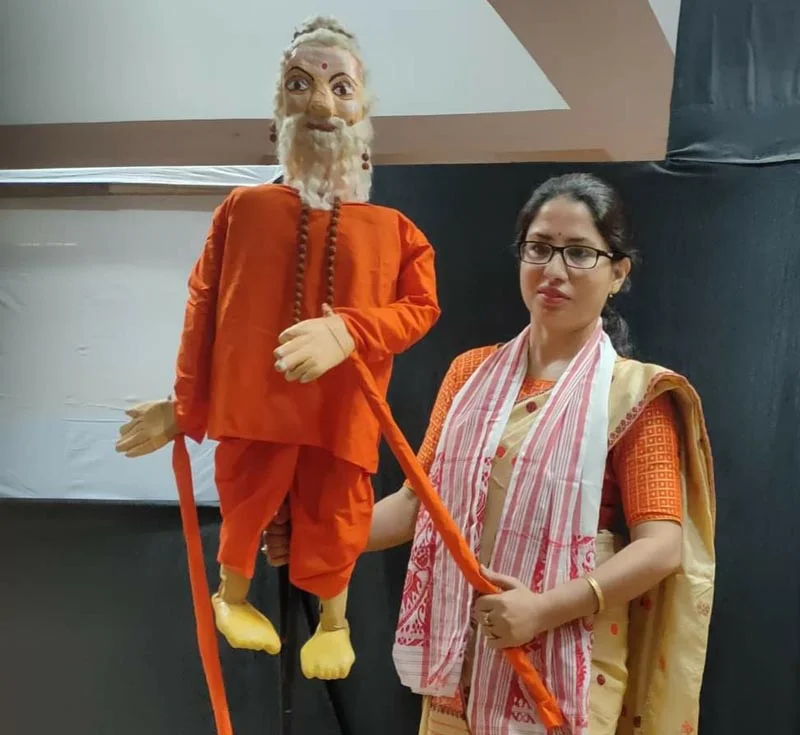When viewed through the lens of tourism, Putala Nach / Puppetry is a cultural tradition that can elevate the experiences of visitors to picturesque villages in the Brahmaputra Valley. A well-loved folk entertainment shows, it thrives in the Changsari, Tihu, and Nalbari regions of lower Assam including Guwahati and the charming towns of Nagaon and Morigaon in central Assam, and in the scenic locales of Majuli and Titabor in upper Assam.
So, when you are on a road trip exploring Assam’s countryside, be sure to schedule detours and savour such delightful shows that will one day become a treasured memory, especially if you value tradition. Don’t expect extravaganza for often the stage is modest and quickly assembled; simply soak in the skill and purity of a timeless art. You could arrange to witness Putala Nach at Bhalukmari near Barapujia, a short detour from Raha on way to Kaziranga and beyond, or at Makhibaha near Tihu while visiting Manas.
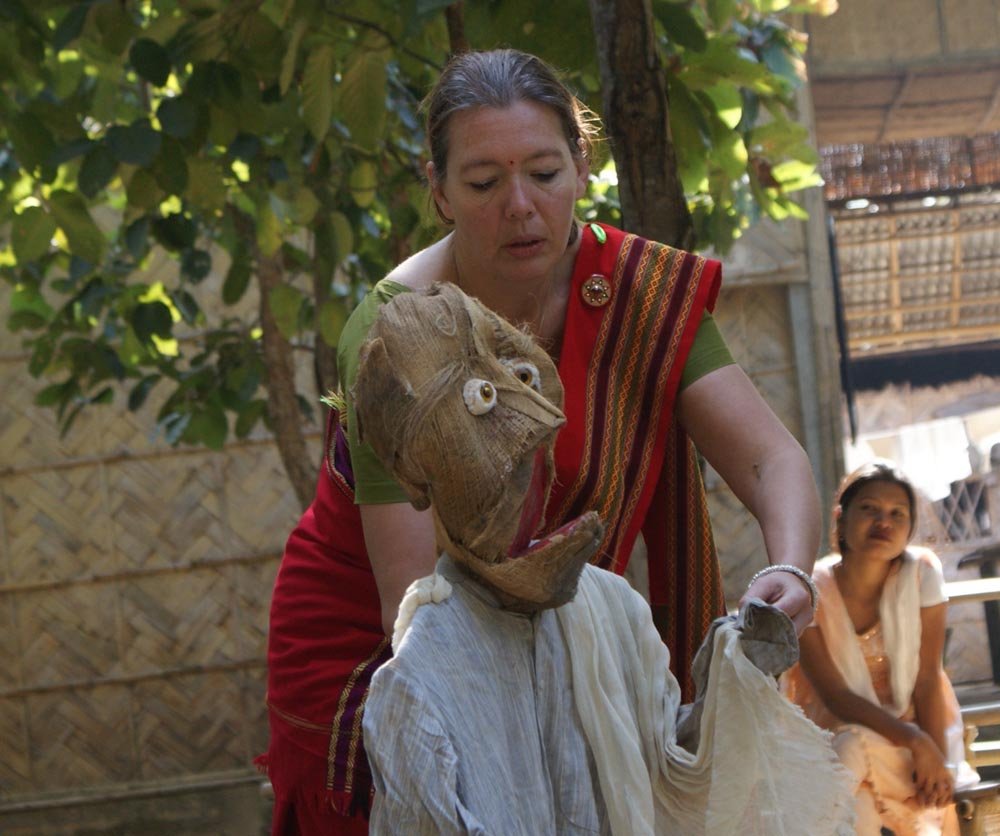
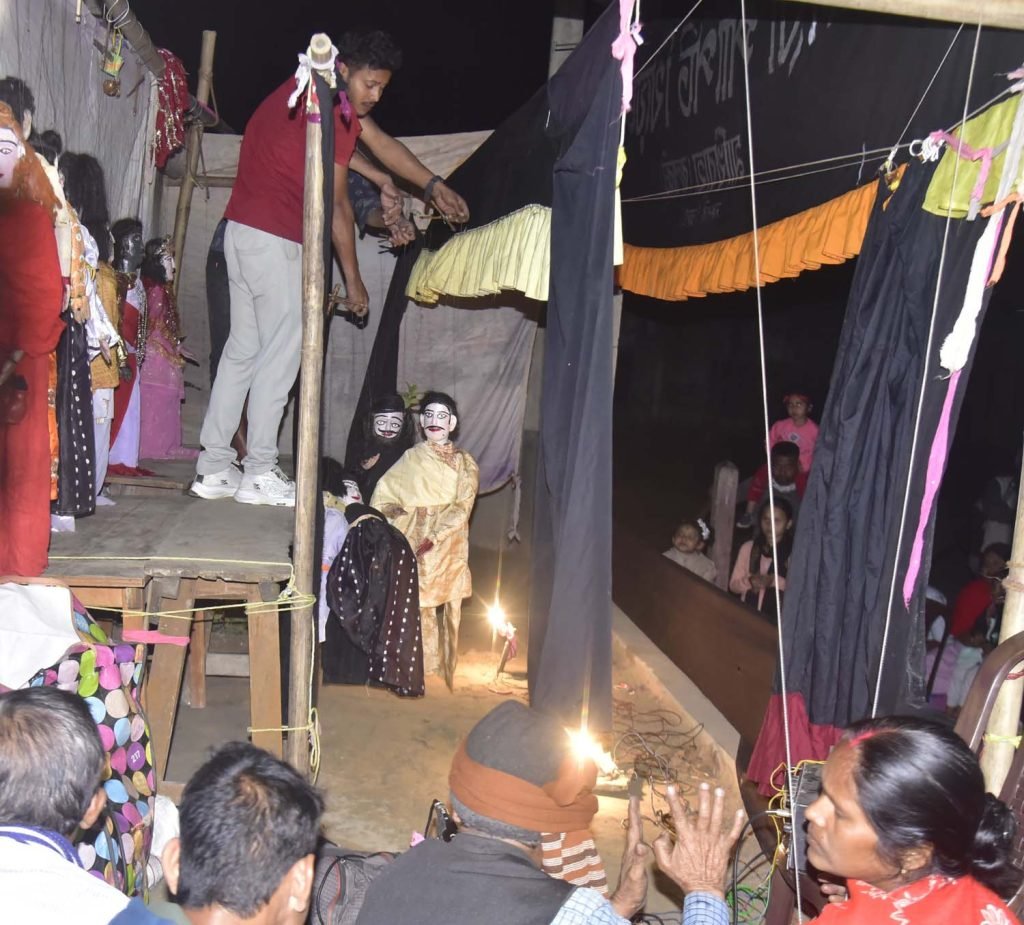
These puppet shows, which can be organised with advance notice, usually have a minimum of five participants—three for chorus and the others for stringing. The troupe leader, known as bayan, sutradhar, or oja, takes on multiple roles of producer, director, coordinator…. During performances, the chorus, accompanied by a drum (khol) and cymbals (tal) occupy one side of the stage, while stringers work behind the screen, adeptly managing multiple puppets simultaneously, utilising hand and body movements to execute a range of actions. Human puppets, assembled with head, torso, and limbs made of cloth and other materials have movable joints that connect the head and the body and are attired to reflect local theatre tradition. Then there are also animal puppets that serve as mounts of gods and goddesses.
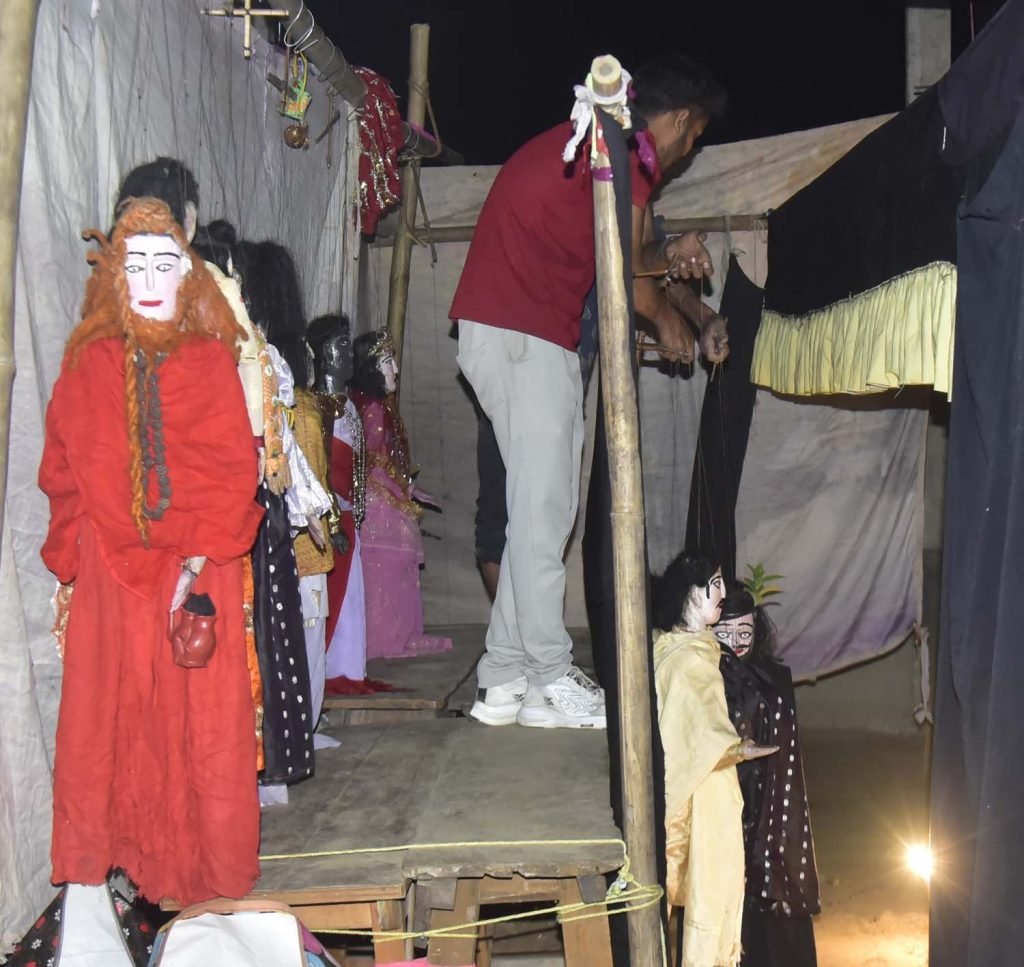
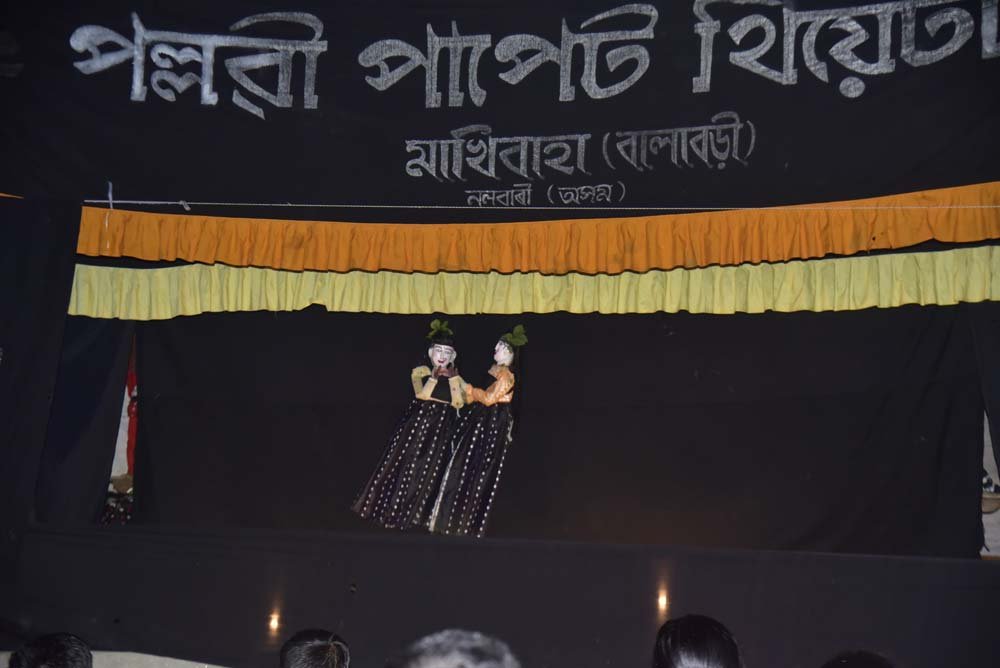
Employing four main techniques—string-puppet or marionette, controlled using strings; rod-puppet manipulated by rods to move different parts of the puppet’s body; shadow-puppet, to create visual effects through shadows, although less commonly practiced or glove-puppet, operated with gloves—Putala Nach is like a captivating storyteller who offers a glimpse into local folklore and customs, thereby enriching the understanding of a destination. Take for example puppetry in Kamrup, where traditional shows highlight vibrant Bihu dance, classic romances, and adaptations from Assamese Vaishnavite tales.
As the world celebrated World Puppetry Day on March 21, we realised that albeit the tradition of Putala Nach is dwindling, it is a wealth that must be revitalised. And, how better than through us and tourism initiatives, especially at tourism events, when puppetry’s interactive charm and ability to transcend the barrier of language can be a magnet for travellers!
